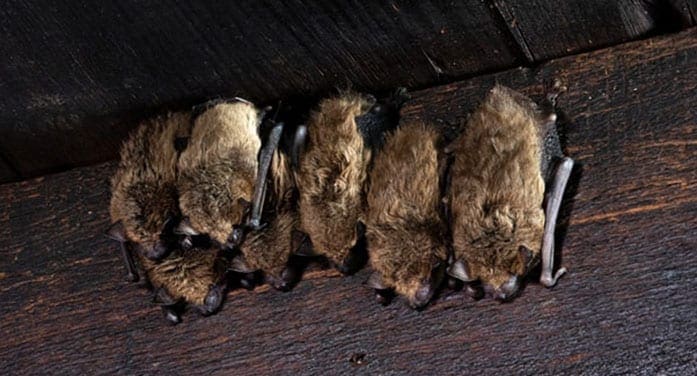A rare lung disease that is linked to bats has made Alberta home, according to new research led by scientists at Alberta Precision Laboratories (APL) and the University of Alberta.
The team of infectious disease experts confirmed that histoplasmosis – a fungal infection transmitted through bat and bird droppings – is now found in Alberta. Their study extends the known range of the disease much farther northwest from its traditional home in the central United States and parts of southern Ontario and Quebec.
“We were surprised at how many cases were locally acquired, as histoplasmosis has always been considered a travel-related infection,” said Tanis Dingle, assistant professor in the U of A’s Faculty of Medicine & Dentistry and lead clinical microbiologist for fungal diseases with APL.
“We now know that it is definitely living in Alberta and has the potential to infect people who come in contact with it.”
The fungus can be present in contaminated dust particles that, when inhaled, can cause respiratory infections with flu-like symptoms including cough, fever, chills and headache. Cases are typically related to individuals who have come in contact with bat or bird droppings in old homes, churches, construction sites and parks.
Examining 45 confirmed cases of histoplasmosis in Alberta between 2011 and 2018, the researchers used epidemiologic data and genetic analysis to determine that 15 of the cases were locally acquired. The cases were found mainly in rural areas in central Alberta, including Sundre, Stettler and county, Stony Plain and Spruce Grove.
Previously, the geographic range of the fungus was not thought to expand farther northwest than Minnesota, some 2,000 km away. Early looks at the study led scientists at the U.S. Centers for Disease Control and Prevention to include the expanded region in newly drawn maps of areas where the disease is known to occur.
“Knowing that histoplasmosis is here can help improve the diagnosis and treatment of patients who have no history of travel to the traditional risk areas,” said Ilan Schwartz, assistant professor in the U of A’s Division of Infectious Diseases.
“Histoplasmosis can be a challenging disease to diagnosis and to treat, and patients often spend months before the correct diagnosis is made,” Schwartz noted. “Awareness that the disease is here is an essential first step for doctors to be able to consider the diagnosis and order the appropriate tests.”
The researchers are also exploring whether climate change could be a factor in the spread of histoplasmosis to new areas. In Alberta, increasing temperatures and decreasing precipitation have been documented over the past several decades, which might have resulted in more favourable conditions for the histoplasma fungus to live in Alberta soils. The fungus can survive in soil temperatures ranging from -18 C to 37 C, with the lower end of the range being common in Alberta winters.
The research team hopes to continue their work by further investigating soil samples to determine other areas in Alberta where the disease may be present.
The study, “Histoplasmosis acquired in Alberta, Canada: an epidemiological and genomic study,” was published in the medical journal The Lancet Microbe.
| By Grady Semmens for Troy Media
This article was submitted by the University of Alberta’s Folio online magazine. Folio is a Troy Media![]() Editorial Content Provider Partner.
Editorial Content Provider Partner.
The views, opinions and positions expressed by columnists and contributors are the authors’ alone. They do not inherently or expressly reflect the views, opinions and/or positions of our publication.




